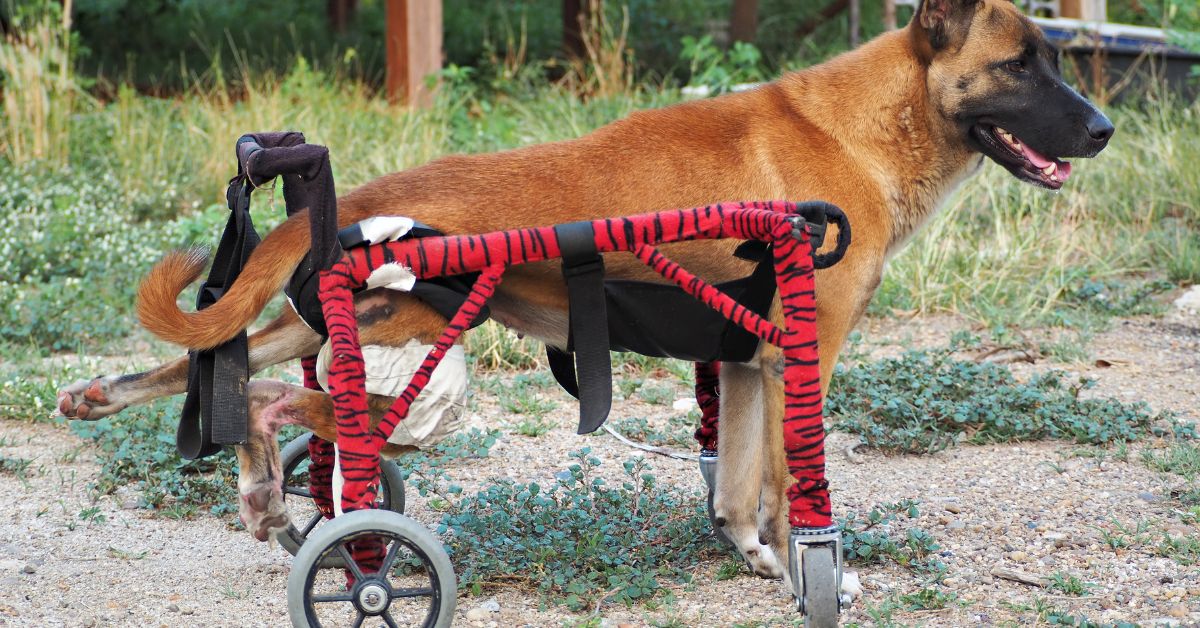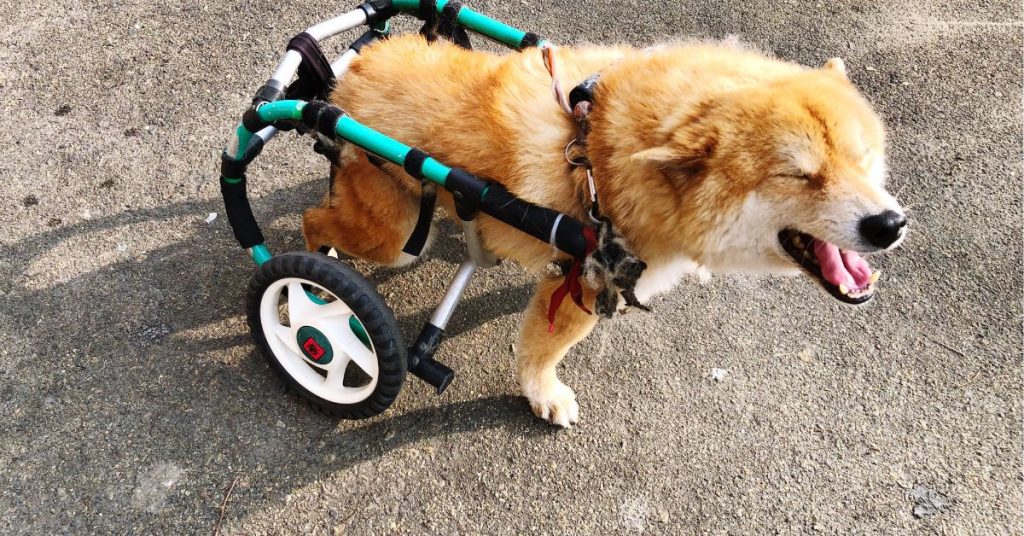Taking care of a dog with cerebellar hypoplasia may be among the best experiences one can have. In most cases, cerebellar hypoplasia manifests itself as instability and lack of coordination in a young dog. The quality of life of such a pet depends on how well you understand its requirements. Therefore, we will share tips on how to care for a dog with cerebellar hypoplasia through this article. Whether you’re new at being a pet parent or have had one with this condition for years already, – let’s talk about them all!
What is Cerebellar Hypoplasia in Dogs?
Dogs with cerebellar hypoplasia have an underdeveloped cerebellum, the part of the brain that controls balance and coordination. It’s usually congenital, so dogs are born with it, often due to genetics or infections during pregnancy. Unsteady gait, tremors, and difficulty with fine motor skills are some symptoms.
With proper care, dogs with cerebellar hypoplasia can live happy, everyday lives. It’s essential to get a veterinarian’s diagnosis early on so you can manage the condition effectively.
Signs and Symptoms Cerebellar Hypoplasia in Dogs

The signs and symptoms of cerebellar hypoplasia are mainly related to movement skills and coordination. Common symptoms include:
- Unsteady, wobbly gait (“drunken” walking)
- Noticeable tremors, mainly when focusing on movements
- Difficulty with delicate motor tasks (e.g., picking up food)
- Exaggerated or jerky movements in the head and limbs
- Trouble navigating obstacles
- Lack of coordination and balance
- Normal pain-free condition despite motor challenges
If you observe any of these symptoms in your dog, consult a veterinarian for a proper diagnosis.
What Causes Cerebellar Hypoplasia in Dogs?
In dogs, cerebellar hypoplasia is often caused by genetic factors or infections during pregnancy. The leading causes are as follows:
- Inherited genetic conditions, particularly in certain breeds
- Viral infections in the mother during pregnancy, such as canine parvovirus
- Exposure to toxins during fetal development
- Nutritional deficiencies in the pregnant mother
- Trauma to the developing puppy before birth
A cerebellar hypoplasia can result from these factors interfering with the normal development of the cerebellum. Detecting and preventing these causes can help in early detection and prevention.
How to Care for a Dog with Cerebellar Hypoplasia

A dog with cerebellar hypoplasia requires a safe and supportive environment to meet their unique needs. Consider these key aspects:
Safe Environment
Cerebellar hypoplasia dogs require a safe environment. Prevent slipping and falling by using non-slip mats and rugs in your home. Secure areas with baby gates to limit access to staircases and other potentially dangerous areas. A soft bed and padded spaces can cushion falls and provide a comfortable resting place.
Use ramps instead of stairs to help your dog navigate different levels in your home. By minimizing hazards, you can reduce your dog’s risk of injury and make him feel more secure.
Feeding and Nutrition
Cerebellar hypoplasia dogs require proper nutrition and feeding. To accommodate their motor difficulties, make food and water dishes easy to access. Elevated feeders may make it easier for them to eat and drink comfortably because they prevent neck strain.
Make sure their diet is well-balanced and nutritious to support their overall health and immune system. If your dog has trouble eating, try different types of food, like wet food or specially designed-kibble. A consistent feeding schedule can also help.
Mobility Aids
Cerebellar hypoplasia dogs can significantly benefit from mobility aids. Use harnesses or wheelchairs designed for dogs with mobility issues. With these aids, your dog can move around more freely and confidently.
Additionally, physical therapy and regular exercise can improve coordination and muscle strength. Working with a veterinary physiotherapist can help you develop a tailored exercise plan. These interventions enhance your dog’s overall well-being and happiness and improve mobility.
Regular Veterinary Care
The management of cerebellar hypoplasia requires routine veterinary care. A regular check-up allows for early detection and management of secondary health issues. Your veterinarian can recommend medications or treatments to alleviate symptoms or prevent complications.
You should maintain your dog’s health by vaccinating, brushing, and controlling parasites. You should keep your vet informed about any changes you notice in your dog’s condition.
Emotional Support
Dogs with cerebellar hypoplasia require emotional support as well as physical care. Due to their physical limitations, these dogs may experience frustration or anxiety. Showing affection and understanding can help alleviate stress.
Engage your dog in stimulating activities they will enjoy, such as gentle play or puzzle toys, to keep their minds stimulated. Consistent routines and a calm environment can also reduce anxiety. By being patient and supportive, you can make your dog feel loved and secure.
Support Network
Building a support network can benefit your dog and you greatly. It can be really helpful to connect with other pet owners who have dogs with cerebellar hypoplasia. You can share tips and experiences on online forums, social media groups, and local support groups.
In addition, numerous resources are available, such as books and websites devoted to caring for special needs dogs. A community of support can help you manage and enjoy caring for your dog more.
Can Cerebellar Hypoplasia Improve?
Cerebellar hypoplasia is a congenital condition that does not improve over time. Fortunately, dogs with cerebellar hypoplasia can learn to adapt to their condition and improve their quality of life with proper care and management.
While the underlying neurological abnormalities remain, supportive measures like physical therapy, mobility aids, and a safe environment can help.
Additionally, some dogs develop compensatory strategies to navigate their environment more effectively as they mature. Affected dogs must get regular veterinary care and ongoing support.
What is Cerebellar Hypoplasia in Dogs’ Life Expectancy?
The life expectancy of dogs with cerebellar hypoplasia is typically the same as that of healthy dogs. However, it does not directly impact their lifespan, even though it may affect mobility and coordination.
With proper care and support, such as a safe environment, a good diet, and regular vet checks, dogs with cerebellar hypoplasia can lead happy and fulfilling lives. Maintaining their overall well-being means addressing any secondary health issues ASAP.
Read More: How To Care For Dog After Neuter?
Conclusion
Caring for a dog with cerebellar hypoplasia requires patience, understanding, and dedication. However, if you give your pet good nutrition, veterinary care, and emotional support, it can thrive despite its condition.
Remember, each dog is unique, and what works best for one may not work for another. Your dog can have a fulfilling and happy life if you work closely with your veterinarian and build a supportive network.




